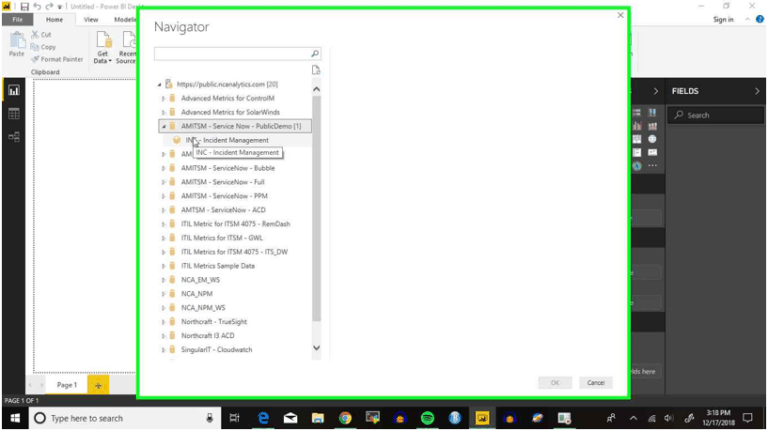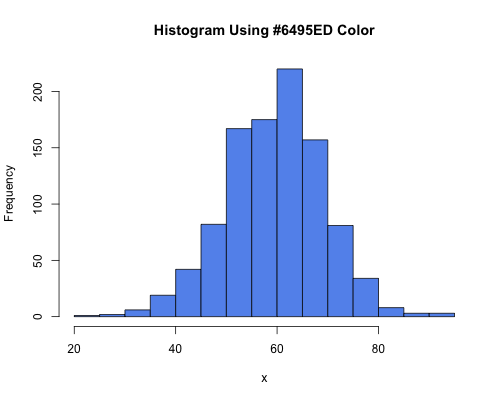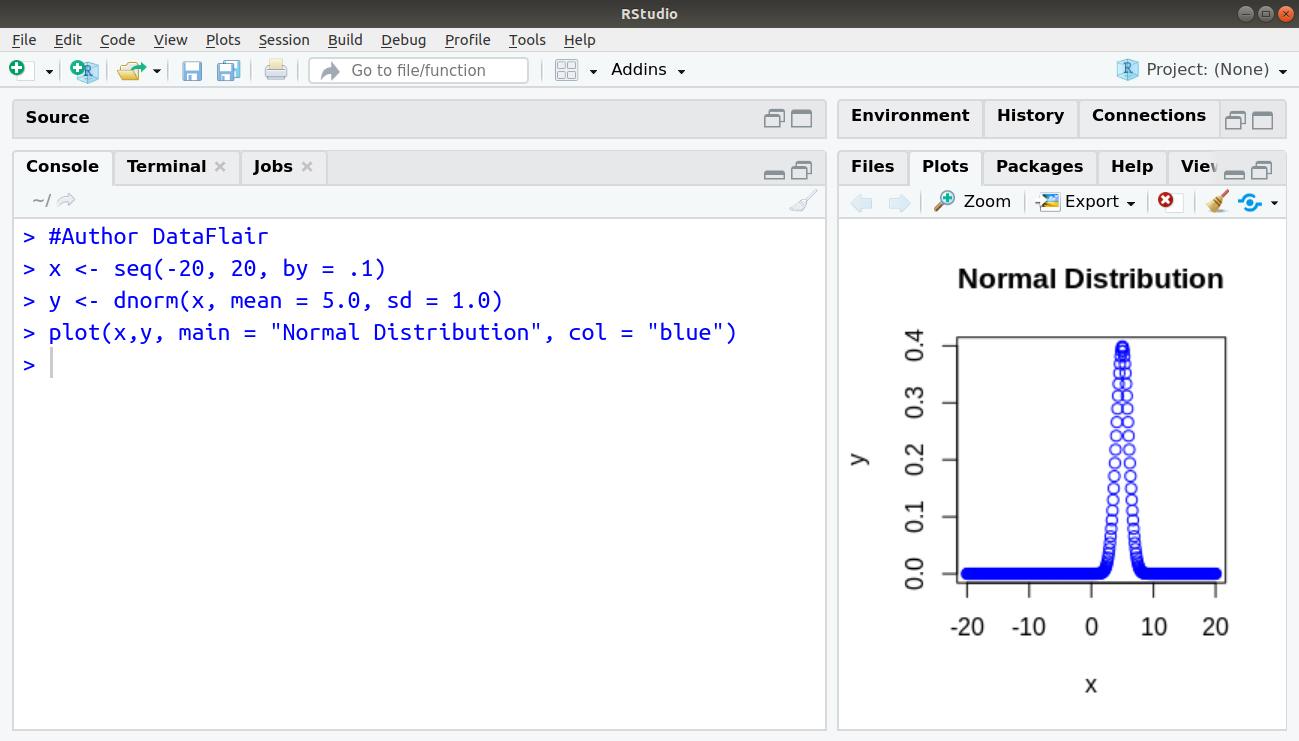
There are similar commands for hypergeometric, negative binomial, Poisson, and other discrete random variable distribution families. pbinom(3, 6, 0.6) Probability that at most 3 people prefer Coke
#Rstudio standard deviation code#
Run the following code to find the probability. To find this we want to find P(X ≤ 3), so the x value is still 3, the sample size is 6, and the probability is 0.60 and we use “pbinom”. What is the probability that at most 3 people prefer Coke? dbinom(3, 6, 0.6) Probability that exactly 3 people prefer Coke To find this we want to find P(X=3), so our x value is 3, the sample size is 6, and the probability is 0.60 and we use “dbinom”. What is the probability that exactly 3 people prefer Coke? Let X= the number among the 6 who prefer Coke. Suppose the tendency among soda drinkers to prefer Coke to Pepsi is 60%. The glasses are identical except for a code on the bottom to ID the drink. The “p” stands for distribution function.Įxample: Each of 6 randomly selected soda drinkers is given a glass containing Coke and a glass containing Pepsi. To find the cumulative probability that X takes on all values up to and including a particular value we will use the function “pbinom(x, size, probability)”. The “d” stands for density or mass of the probability at that value of x. In R to find the probability that X takes on a certain number we will use the function “dbinom(x, size, probability)”. This is a distribution for a discrete random variable so we can compute the probability that X is a specific number as well as the cumulative probabilities. Let’s start with the binomial distribution. Commands for Families of Discrete Random Variables In statistics, we generally no longer use tables to look up probabilities for distributions and we would prefer not to calculate discrete probabilities by hand if the distribution of the data is a named distribution. Sd(frisbeeDist) Calculating mean using the mean( ) and sd( ) commands. Here are those commands using the data stored in the frisbeeDist variable. The command to calculate the standard deviation of a variable is “sd(x)” where x is the variable name. The command to calculate a mean of a variable is “mean(x)” where x is the variable name. We can use this variable now to calculate the mean and the standard deviation of this data. The frisbeeDist variable is now in the Environment with the values stored in it. Once you create a variable it looks like nothing happened, but if you check the Environment tab, you should see the variable and its values. The symbols “<-” means we are storing the values in that variable name. We will store the data in a vector using the R function “c( )” which means we will combine all of the values. So let’s name the variable “frisbeeDist”. In this case, it looks like most went too far. Let’s say that these values represent the distance a Frisbee lands from a target. When creating variable names you want to give it an informative name. Then we really want to save them as a list of values in a variable that we can refer back to for various calculations.

Now, let’s say we want to get more statistics on those 10 numbers. Which gives us: Calculating mean the “long” way Now of course, that is not the mean but the sum of the 10 values, to find the mean we need to divide by 10. You should see the following: To calculate a mean, first add all of the numbers together

Hint, you can copy and paste it the above line! After pasting it, hit enter. Let’s start out by calculating the mean of 10 numbers the “long” way or formula based way in R.Īfter the greater than symbol ( > ) in the Console type the following: 8.22 + 6.00 + -5.11 + 1.81 + 2.92 + -6.29 + 8.57 + 1.18 + -4.80 + 9.81 If you have a different version than someone else it is possible that your results may be different than the other person, but that is generally not the case with basic functions, the focus of this blog post. The version this post is based on is “Kite-Eating Tree” aka version 3.4.3.

R likes to name their versions interesting names. The first thing you should notice in the Console is the version of R you are running. I am going to structure the blog post assuming that you are following along and running the commands in RStudio as we go.Īfter installing RStudio and launching the application you should see something that looks like this: RStudio window with panes annotated in blue marking the three standard panes It is a much nicer calculator than a hand held calculator as it can provide help and feedback to make sure you are running the correct commands.
#Rstudio standard deviation how to#
Now that you have R and RStudio installed, I will show you how to use the software by first starting with the basics of just using RStudio as a fancy calculator.


 0 kommentar(er)
0 kommentar(er)
